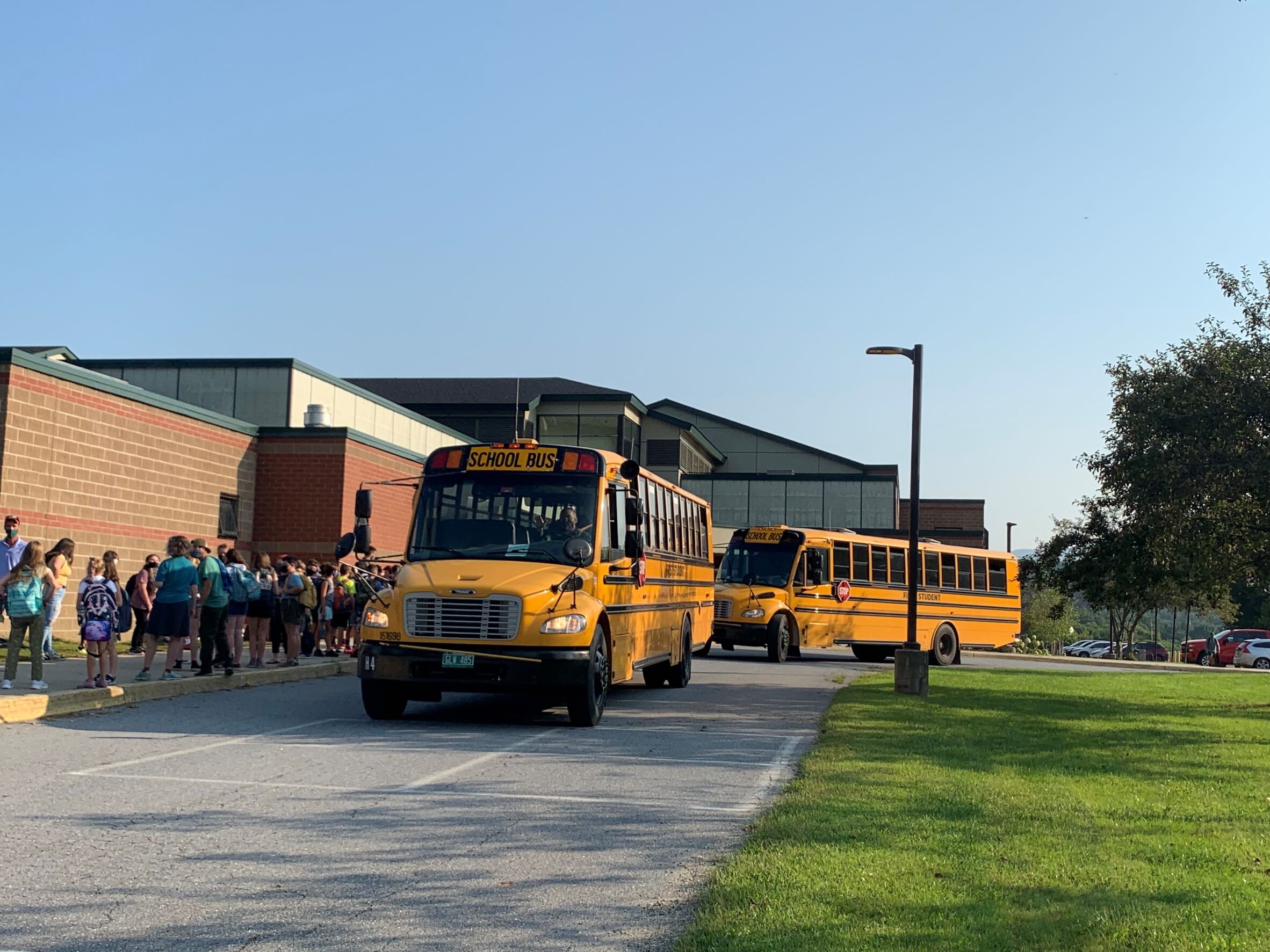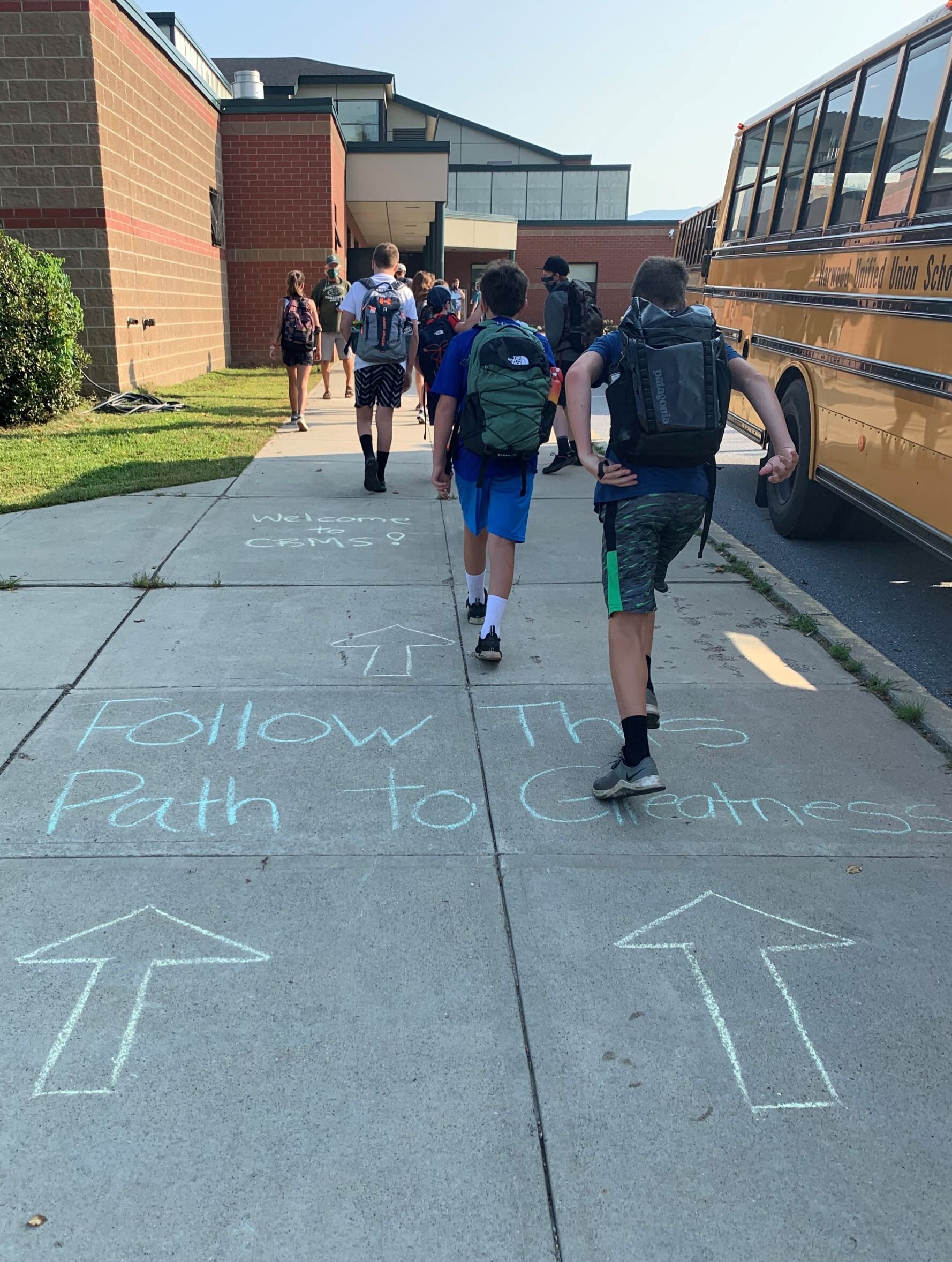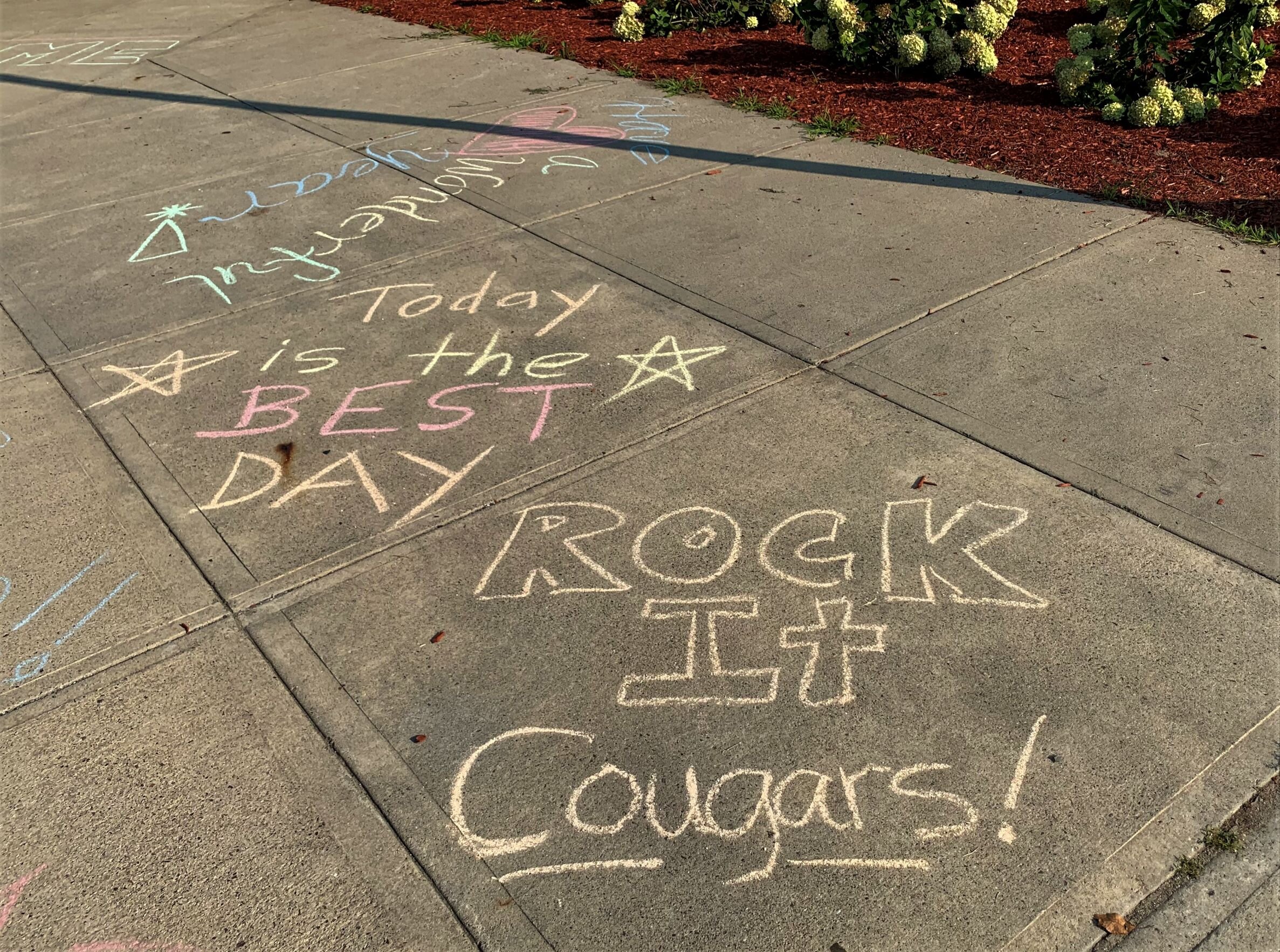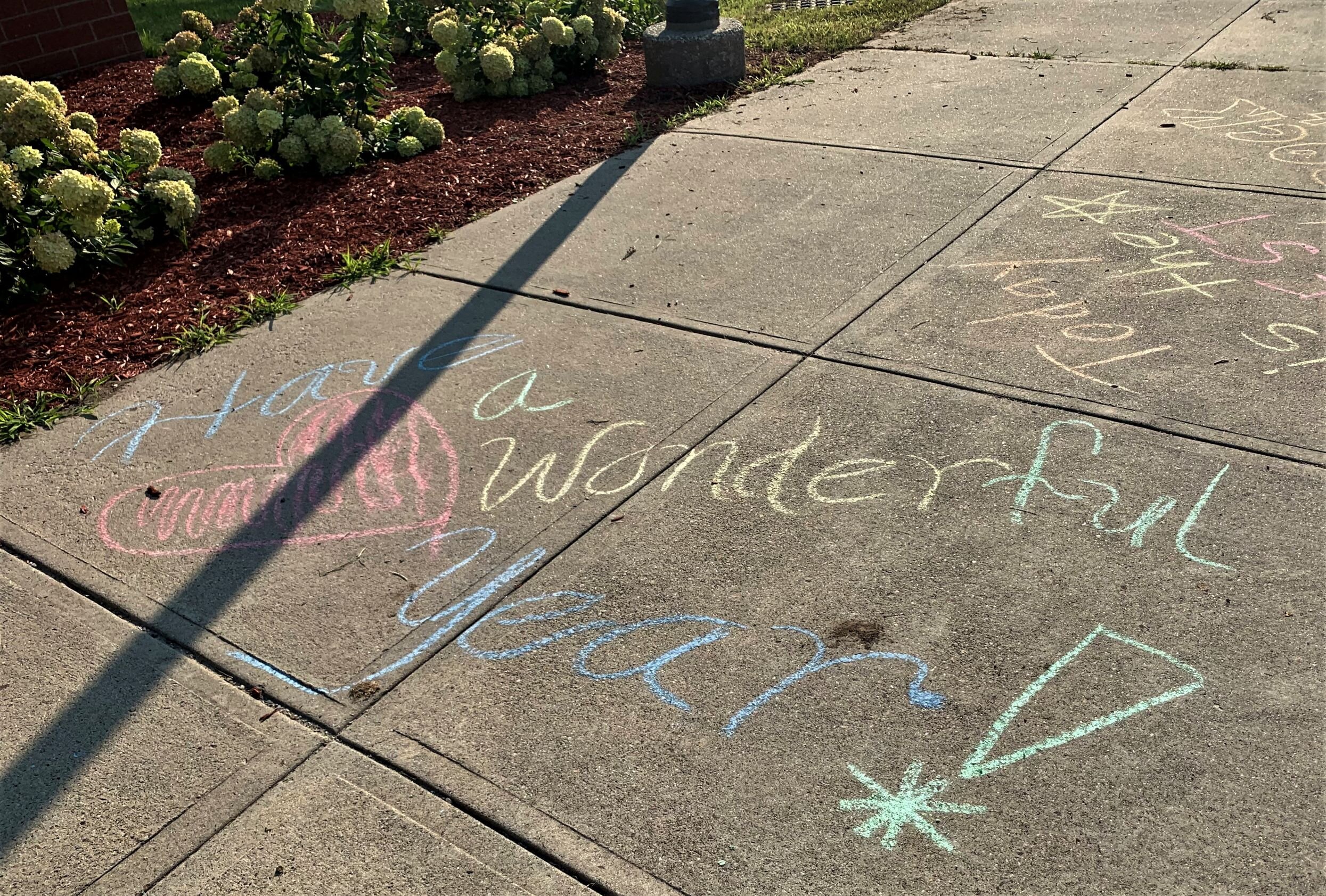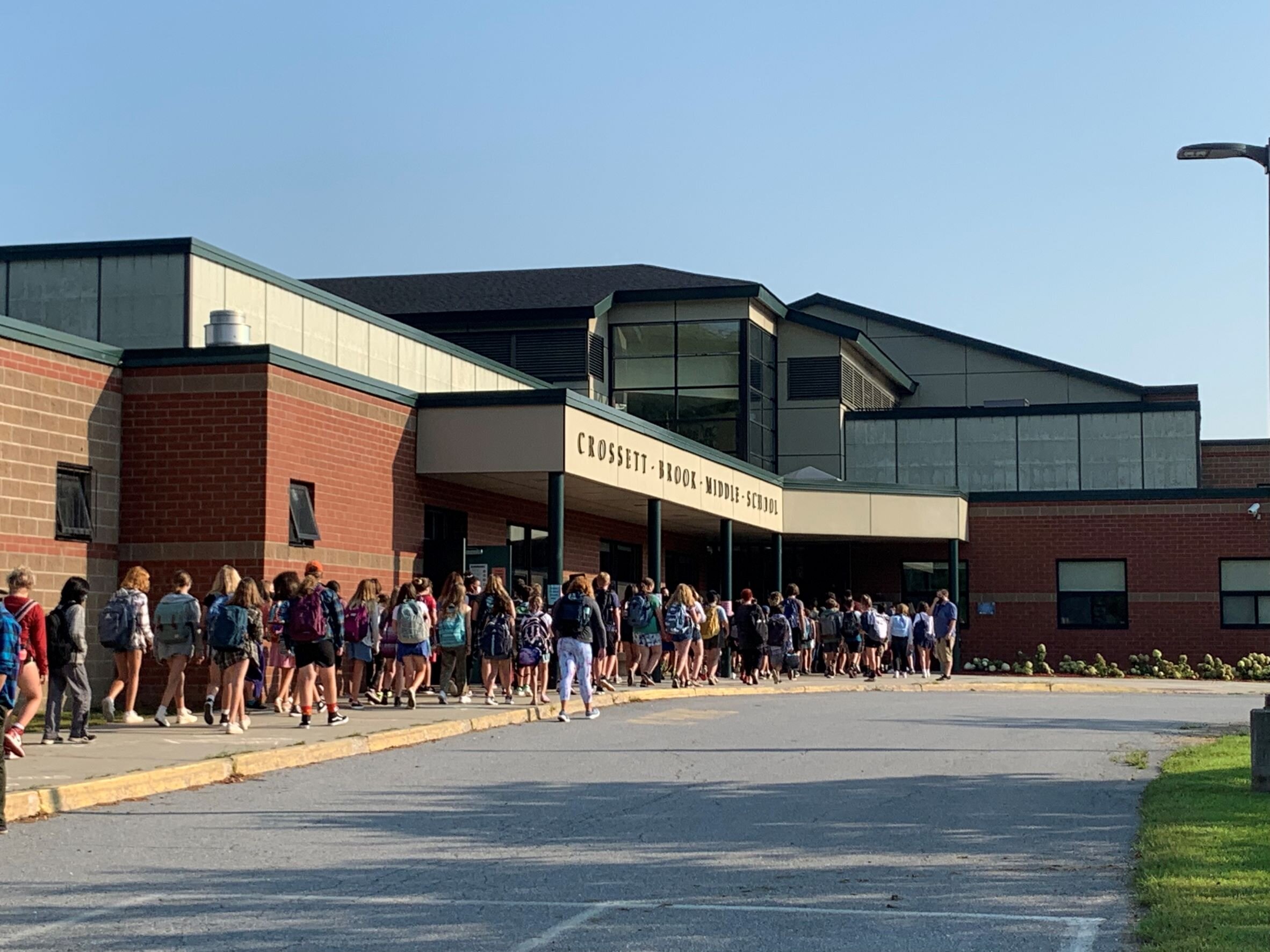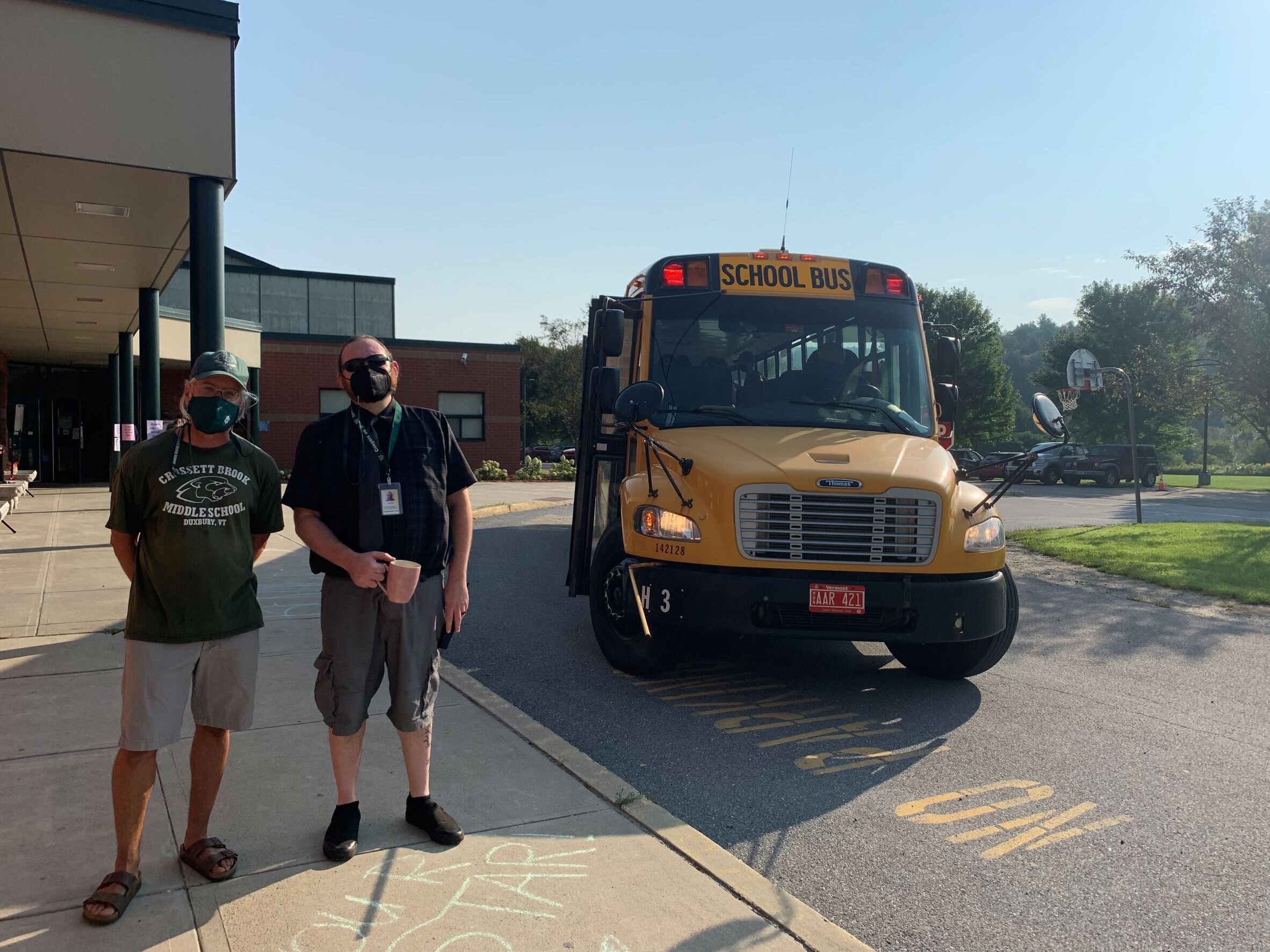Schools manage bus snafus, COVID-19 in getting back full-time, in person
Sept. 11, 2021 | By Lisa ScagliottiJust over two weeks into the new school year, the Harwood Union district has navigated bus glitches and a few COVID-19 cases while adjusting to full-time, in-person operations for the first time since March 2020.
Now into what is the third academic year during a pandemic, schools in the district have settled into yet another new routine with precautions in place to prevent the spread of coronavirus while having all students in classrooms and no remote learning this year.
So far, it’s proceeded with just three cases of COVID-19 identified. Crossett Brook Middle School reported the first on Aug. 29 after just two days of the school year. The case involving a fifth grader sent more than 20 students and staff home to get tested and quarantine. That was followed this week by one case at Brookside Primary School (formerly Thatcher Brook Primary School) in Waterbury with a third grader testing positive and on Thursday a person “within the kindergarten classroom” in Warren Elementary School was identified with the virus.
So far, however, these single instances in each school have not resulted in any additional cases identified among peers or teachers.
At Wednesday’s Harwood Union School Board meeting, Superintendent Brigid Nease ran through the cases to date at that point along with numbers of students and staff in quarantine and awaiting test results. She noted that the state of Vermont this week has begun reporting case data for schools. The first report released Tuesday with information current through Sunday, Sept. 4, showed 81 cases statewide. The figures indicate instances where individuals were contagious with the COVID-19 virus while attending school.
Nease said that number was smaller than she expected and reflected just one or two cases per school reporting. “That’s very good news,” she said. The state will update school data weekly on Tuesdays in the communities section of its COVID-19 website.
Harwood Union schools two main strategies to address COVID-19 are to have all students and staff wearing masks regardless of vaccination status until further notice and to require all staff be vaccinated or be tested weekly.
State education and public health officials previously suggested schools could drop mask-wearing once 80% of eligible students in a school were vaccinated, starting as soon as 10 days into the school calendar. That directive is now on hold until Oct. 4 as cases overall in Vermont are at one of their highest peaks of the pandemic and “until we have a better understanding of where this virus is heading,” Education Secretary Dan French said.
Schools across the state are proceeding with caution and the goal of keeping schools open for in-person learning as much as possible. Unlike last year, the state is discouraging remote learning now, so much so that should an entire school close for in-person learning, days spent home will not be counted towards the needed number of school days for the academic year, Nease said.
“Our plan going forward is work sent home just like any other time a student is out sick on an individual basis,” Nease said, noting that should an entire class go into quarantine, then the teacher may be able to teach remotely.
Also at this week’s school board meeting, Nease reported that administrators had surveyed staff across the district and found only nine staff members were not vaccinated. Counting contracted staff, that number came to just 13 individuals, Nease said.
In keeping the emphasis on vaccinations this week, Gov. Scott and Secretary French discussed plans for the state to launch a vaccination incentive program offering grants to schools this year using $2 million in federal funding. The program would involve students in grant applications with awards based on vaccination levels in their schools.
“We’re hoping to emphasize just how important it is to be vaccinated,” Scott said.
Another key effort both state and local school leaders will use to try to stay ahead of virus spread will be weekly COVID-19 surveillance testing for both staff and students. That’s scheduled to start in the Harwood district on Monday, Sept. 20.
These tests are not offered for those who might have symptoms or who have been identified as a close contact with someone with COVID-19 and already think they could possibly be infected. Surveillance testing looks to test a broad cross-section of the school population to find individuals who may be positive but not symptomatic. Without a test, those people could be contagious and unknowingly infect others. The results also give public health officials a sense of how prevalent the virus may be in the general population in the community.
Testing will be available for K-12 students with parental permission.
A temporary banner bears the new name, Brookside Primaer School until a permanent sign can be erected. Photo by Lisa Scagliotti
New year. New name. New principals.
The new school year marked the opening in Waterbury of the primary school with its new name – Brookside Primary School – renamed this spring from Thatcher Brook Primary School. The change came after community members researching its history learned that its namesake, 19th-century Waterbury landowner and surveyor Partridge Thatcher, enslaved people.
Changes have been made to school websites and materials. A temporary banner with the new Brookside name hangs below the Thatcher Brook Primary School sign on the front of the building. Nease said a permanent new sign is in the works.
Steve Lotspeich, Waterbury’s Director of Planning and Zoning, said replacing the sign should be a straightforward step. “The replacement of the existing sign on the primary school building will not require a zoning permit because it will be the same size and location on the building,” he said.
Lotspeich said school officials have suggested installing an informational kiosk in front of the building to announce school events. That item may require a zoning permit and possibly review by the Development Review Board.
Brookside also has opened with new school leaders this year, Co-Principals Sarah Schoolcraft and Chris Neville. Schoolcraft was formerly assistant principal; Neville just joined the staff having moved to Vermont from Colorado this summer.
Working out the bus kinks
The school year also opened with new bus routes across the district, later starting times for middle and high school students, and separate bus runs for older and younger students. It is the first overhaul of the system in 20 years and needless to say, there were glitches. The district used the emergency alert system the first two days of school to let parents know afternoon buses were late.
“We had a rocky start without a doubt with our new bus routes and schedule changes,” Nease said. “We know how frustrating this has been for families, and beg their forgiveness, understanding, and patience until we get it all worked out and fine tuned.”
As of Friday, Sept. 3, most of the issues had been ironed out with the expectation that buses would be running on schedule by this week. Nease said multiple factors led to delays such as families not realizing their buses had changed so students were unsure of what bus to take. Last-minute changes in the online system to track which buses students rode were made and short staffing to monitor boarding buses added to the confusion, she said.
“To amplify this, on the first day all the Waterbury radios stopped working for 20-30 minutes, only the Waterbury area,” Nease said. School officials are working with the communications contractor regarding the radio issue as well.
Nease told the school board on Wednesday that buses were running approximately 90% according to plan with some remaining kinks getting resolved. When asked about school-specific issues, Nease suggested that the board invite principals and managers at First Student bus service to an upcoming meeting.
Preparing to step down
For Nease, this will be her final school year navigating COVID-19, bus issues, and more in the Harwood district. She plans to step down next June when her current contract ends. At its meeting on Aug. 24, the Harwood Union School Board agreed to pay Nease for 35 of the 89 days of accrued leave she has.
Given a demanding work schedule since spring 2020, Nease said she has 75 accrued vacation days, 10 holidays and four personal days. She is working on a plan to take the remaining 54 days as leave during this school year. Without an assistant superintendent, however, it will involve some planning to come up with a “substitute” to fill in.
“I am working with our HUUSD admin team to designate and delegate duties and responsibilities,” Nease said. “They will be compensated at their per diem hourly rate for the work they do in addition to their regular responsibilities.”
Nease, who has been in her position since July 2009, didn’t say when the leave would be taken.
Meanwhile the school board has chosen a search firm to recruit candidates for the job. The school board at its meeting on Wednesday night, Sept. 15, will review a timeline for the search and appoint a committee of the board to oversee that process that has a goal of choosing a candidate for the job by February. More details about Wednesday’s meeting which will largely focus on the construction bond proposal are online at HUUSD.org under the Board tab.

